An Astonishing Ocean Discovery Might Have Just Ended the 86-Year Search for Amelia Earhart
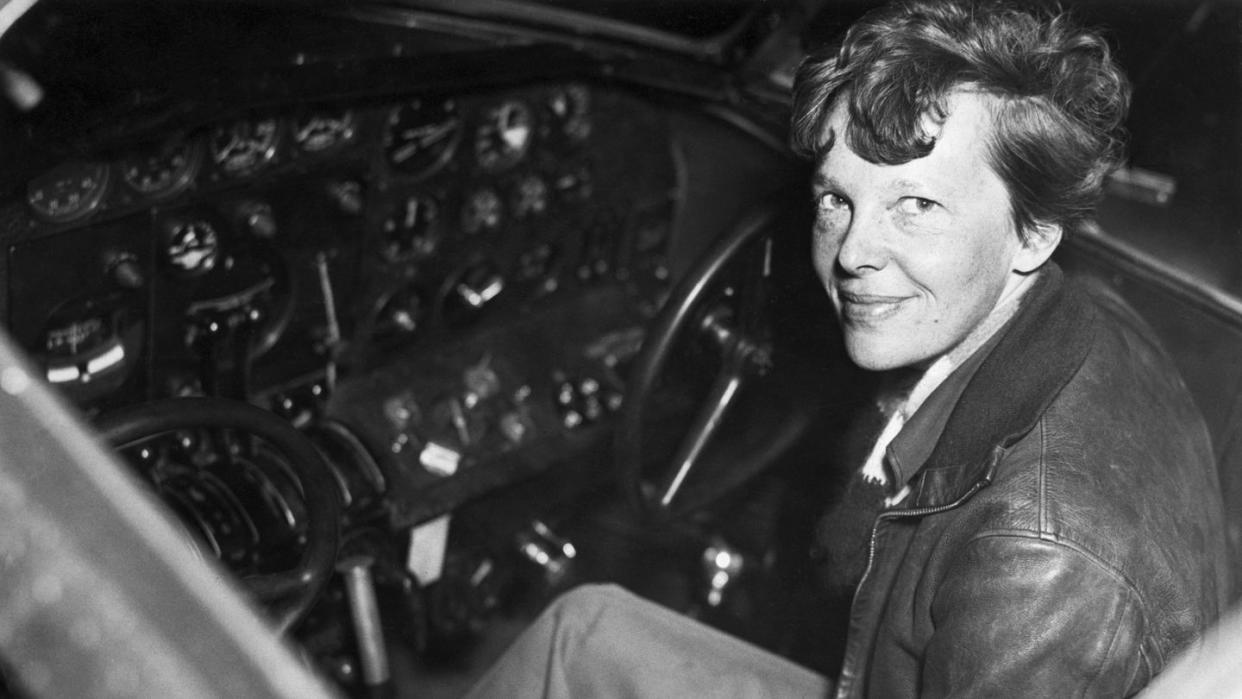
- Oops!Something went wrong.Please try again later.
- Oops!Something went wrong.Please try again later.
This story is a collaboration with PopularMechanics.com.
Has Amelia Earhart finally been found? The world has searched for the famous pilot’s missing plane for 86 years and, now, ocean archaeologists believe they’ve located it at last—and they have the evidence.
Deep Sea Vision, a South Carolina-base ocean exploration team, says its most advanced unmanned underwater drone scanned more than 5,200 square miles “before finding what could be the legendary American aviator’s Lockheed 10-E Electra.”
If true, this discovery would put a cap on one of history’s most enduring tales of adventure and enigma—the fateful disappearance of Earhart and her navigator, Fred Noonan, while attempting an ambitious flight around the globe. On July 2, 1937, the pair took off from Papua New Guinea on the latter stages of their daring journey and were never seen again, vanishing without a trace.
“You’d be hard-pressed to convince me that this is not an airplane and not Amelia’s plane,” Deep Sea Vision founder Tony Romeo told NPR.
Romeo, a former U.S. Air Force intelligence officer, led a 16-member team using the advanced Kongsberg Discovery HUGIN 6000 unmanned underwater drone. Over 90 days, they meticulously scanned the Pacific Ocean west of Earhart’s anticipated landing site, a region devoid of documented wreckage. Each sonar dive spanned nearly 48 hours, amassing several terabytes of data.
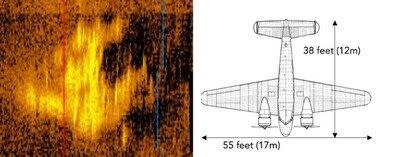
When they combed through the gathered information, they encountered an image that Romeo described as a “surreal moment,” which they believe substantiates the theory that Earhart’s plane ran out of fuel and was unable to reach Howland Island.
They believe the image reveals “contours that mirror the unique dual tails and scale” of Amelia Earhart’s plane.
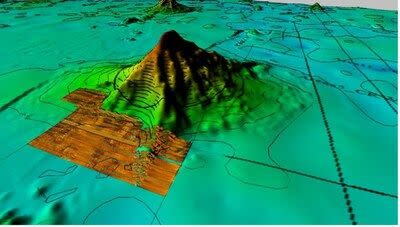
The image alone isn’t definitive proof. But according to Romeo, the object’s shape in the sonar images closely resembles the Lockheed Electra, and the discovery’s location aligns with the Date Line Theory.
This theory, crafted by Liz Smith, a former NASA staffer and hobbyist pilot, posits that after a 17-hour flight, Fred Noonan failed to account for crossing the International Date Line, which would have required adjusting the date from July 3 back to July 2—leading to a 60-mile navigational mistake and causing he and Earhart to miss Howland Island, as explained by Deep Sea Vision.
This oversight would have resulted in Earhart’s plane crashing into the ocean. Until Deep Sea Vision took on the task, the region and scenario outlined by Smith’s theory had remained unexplored.
“We always felt that [Earhart] would have made every attempt to land the aircraft gently on the water, and the aircraft signature that we see in the sonar image suggests that may be the case,” Romeo says in the statement. “We plan to bring closure to a great American story.”
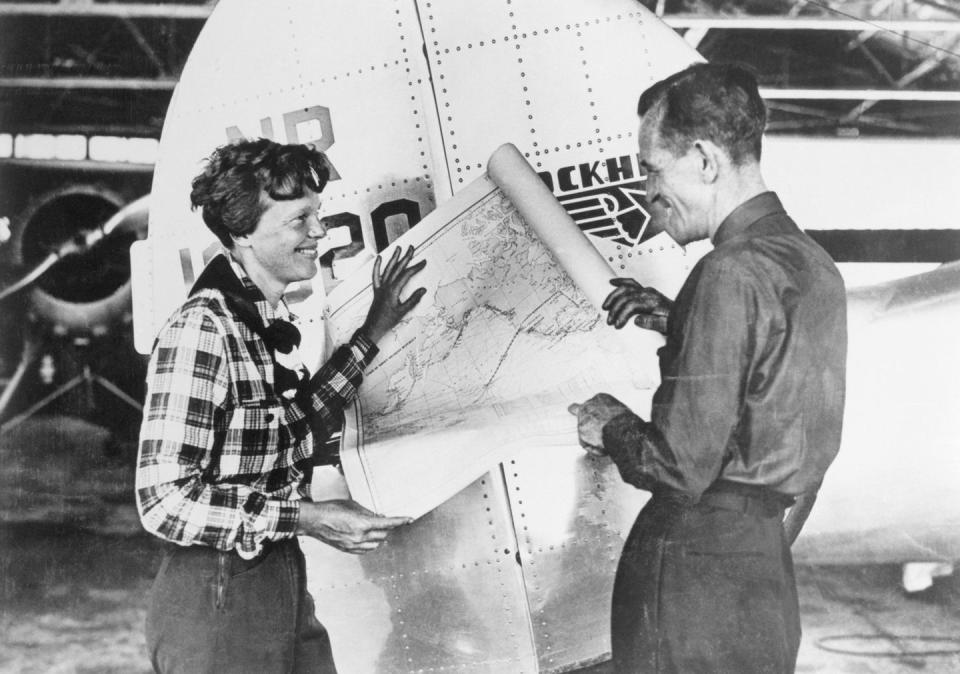
Dorothy Cochrane, Aeronautics Curator at the Smithsonian’s National Air and Space Museum, has worked to validate the findings, according to Deep Sea Vision. “We are intrigued with DSV’s initial imagery and believe it merits another expedition in the continuing search for Amelia Earhart’s aircraft near Howland Island,” she says in a statement.
The ocean exploration team hopes to investigate the area where the images were taken later this year, bringing fresh eyes to a scene that remains underneath waves of speculation and intrigue.
How Did Amelia Earhart Disappear?
As Biography has highlighted, the mysterious final flight of Amelia Earhart captured the world’s imagination in 1937, just as it continues to today. Earhart and Noonan were six weeks and 20,000 miles into their global journey when they failed to make their scheduled landing at Howland Island, located approximately 1,700 miles southwest of Honolulu, Hawaii.
The 2.5-square-mile island proved difficult for Earhart’s plane to find amidst the vast ocean. There’s no concrete evidence that points to why the plane never made it to the island, or where it went instead. The absence of definitive proof has given rise to a multitude of theories about the fate of Earhart, Noonan, and their plane.
The most widely accepted theory suggests that Earhart and Noonan simply crashed into the ocean and sank after running out of fuel. Another credible theory posits that the duo landed on a coral reef around Gardner Island, now called Nikumaroro Island, located 350 nautical miles southeast of Howland. Supporting this theory are distress radio signals traced to that island shortly after the disappearance. Yet another chilling, albeit less plausible, theory is that Earhart met her end at the claws of the island’s predatory giant crabs.
The International Group for Historic Aircraft Recovery also contends that a 2009 underwater photo captures Earhart’s plane’s engine cowling lying in the ocean. However, without precise information on the photo’s location, pinpointing and verifying this claim proves challenging.
The enduring fascination with Amelia Earhart’s disappearance is as much about the unsolved end to her historic journey as it is about her pioneering spirit. Earhart wasn’t just a pilot; she represented adventure, courage, and all the incredible things women could achieve in the field of aviation.
Who Was Amelia Earhart?
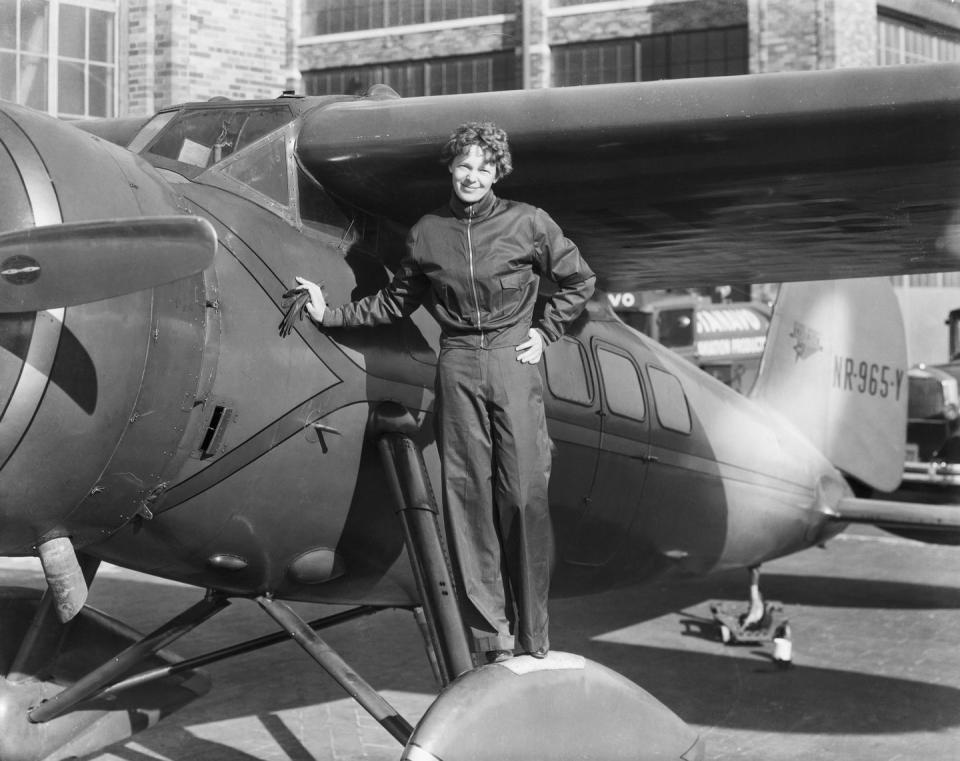
Amelia Earhart, a Kansas native, began her ascent to fame in 1922 when she piloted her bright yellow Kinner Airster biplane, endearingly called “The Canary,” to a then-record height of 14,000 feet for female aviators. By 1923, Earhart had earned her pilot’s license, becoming the 16th woman to do so from the Federation Aeronautique. While financial struggles forced her out of flying, she returned to aviation in 1927.
Now residing in Massachusetts, Earhart jumped at the opportunity to be the first woman to partake in a transatlantic flight. Although just a passenger on the 1928 adventure led by pilot Wilmer “Bill” Stultz, her subsequent book chronicling the experience catapulted her into the spotlight.
Following her initial fame, Earhart embarked on her own pioneering flights. In 1932, she made history as the first woman to fly solo across the Atlantic, navigating a nearly 15-hour journey from Newfoundland to Northern Ireland. She continued to add a series of impressive flights to her global résumé, all culminating in what was to be her most monumental flight of all: an ambitious bid to be the first person, period, to circumnavigate the globe along the equator.
After an initial mishap that resulted in damage to her Lockheed on the Oakland, California, to Hawaii leg, the aircraft required shipping back to California for repairs. This setback forced a change in plans due to evolving weather patterns and global winds, leading to a revised route starting eastward from Oakland, placing the Pacific Ocean at the end of the journey rather than at the beginning.
How Did Amelia Earhart Die?
Earhart and Noonan then embarked on a route that took them through Miami, across Central and South America, over the Atlantic to Africa, and over the Indian Ocean, reaching New Guinea having flown 22,000 out of the approximately 29,000 miles of their intended route.
The 2,556-mile flight to Howland Island was always going to be tricky. A flat sliver of land that was only 6,500 feet long, 1,600 feet wide, and no more than 20 feet above the ocean waves, the island often looked like a cloud. With a variety of contingency plans—including help from the U.S. Coast Guard vessel Itasca stationed off Howland Island—Earhart and Noonan were confident.
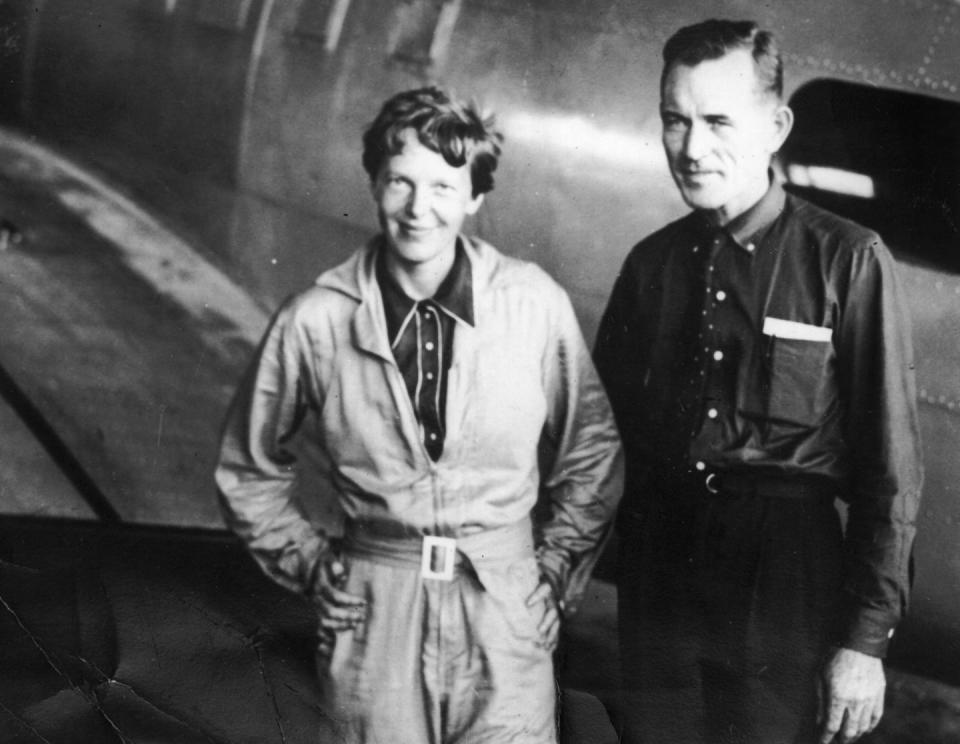
But their plan wasn’t foolproof. They had swapped out essential radio equipment to accommodate additional fuel, and the unavailability of high-octane fuel further limited the plane’s range. Plus, overcast skies hindered reliable celestial navigation, and Earhart and Noonan were relying on outdated maps that incorrectly placed Howland Island. There was also the possibility the plane’s radio antenna had sustained damage.
Due to a misunderstanding between Earhart and the Itasca crew, the two never connected in real time. When it became clear that Earhart was unreachable, an extensive search operation commenced. Despite employing 66 aircraft and nine ships in a search that cost $4 million, they found virtually nothing.
Most leading aviation and navigation experts believe that the plane probably crashed due to fuel depletion while seeking a landing spot, leading to Earhart and Noonan’s demise at sea—a consequence attributed to “poor planning and even poorer execution.”
We still don’t know anything for certain, and Amelia Earhart’s last adventure remains unresolved. But if the ocean explorers really have found the most crucial piece of the puzzle—Earhart’s missing plane—this could be the breakthrough we’ve been waiting for, finally offering closure to one of aviation’s greatest mysteries.
You Might Also Like

